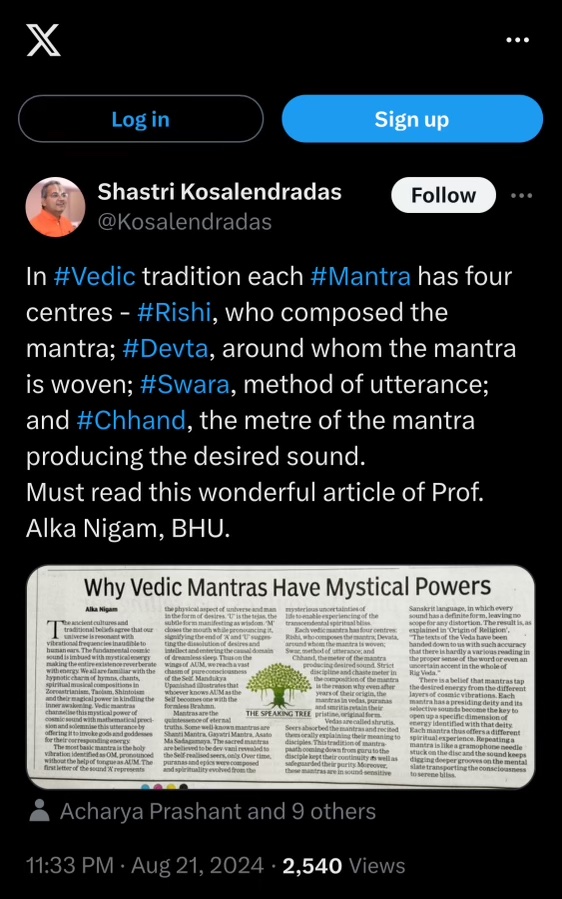The Speaking Tree
Times of India, New Delhi
March 28th 2011
In Hindu thought artha, dharma, kama and moksha are considered the four goals of life. These concepts are the undercurrents of the stream of all life and are not contradictory. Artha and kama as the urges of human instinct represent the truths of life. These become beautiful when enjoyed in accordance with the principles of righteousness.
Dharma is shivam or kalyankari. It takes negativity out of wealth and sex and purifies them. Wealth is involved in goddess Lakshmi and we are exhorted to earn as much as we can so that it can be used in public service.
Kama too has a god in Kamdeva. Shiva destroys him the moment he emerges with the feel ing of physical gratification but when it is enjoyed with love without lust and to offer progeny, it becomes pure beauty and magic of life. The truth of life is thus at once virtuous and base, savage and gentle, ugly and immensely beautiful, with joy and sorrow, light and shadow. Death-in-life completely envelops in itself life-in-death. Destruction is as sacred as creation because destruction quickens new birth. One who knows this Truth also knows that since it is the law of Nature it has to be kalyankari for all life. Nothing bad ever happens in Nature, because it is the concrete manifestation of the love of Lord.
In his poem Ode to a Grecian Urn, Keats says “Beauty is truth, truth beauty” and “that is all/ Ye know on earth, and all ye need to know.” To Keats beauty is the touch stone of truth. “To see things in their beauty, is to see things in their truth” wrote Arnold.
In a letter Keats wrote: “What the imagination seizes as beauty must be truth.” Plato similarly thinks that beauty is the splendour of truth. The whole of creation is beautiful and this is the truth of life. But it is the partial truth. Hindu thought adds the word Shivam to it and the concepts of beauty and truth are at once raised to a lofty realm. Shivam comes after truth. That means the ultimate, truth is to know that life in its numerous variety of forms is sacred and this alone is its beauty.
Truth is epitomised in Goddess Kali. She is the primordial energy of the cosmos and is worshipped as Shakti -the sustaining principle of life. She incarnates consummate beauty of death; she incarnates perfect beauty of life, simultaneously violent and tender, grotesque and beatific. Shiva, her consort, personifies Shivam – all that is good on earth. He is the destroyer of creation, but for its preservation, He has drunk poison and kept it in his ‘kanth’or throat and has come to be known as ‘Neelkantha’. This makes him ultimate in kindness and magnanimity.
Shiva is revered by devotees because He is considered to have never refused a boon to any one. He is the benefactor of all. Together, Shiva and Kali become the quintessence of Satyam Shivam Sundaram. Truth, well being of all, and beauty are the basis of creation and the guiding force of all life. Any concept that leads to bahujan hitaya or common welfare is inevitably going to be for bahujan sukhaya or happiness for all – and this truth alone is underlying beauty of life.

Leave a Reply